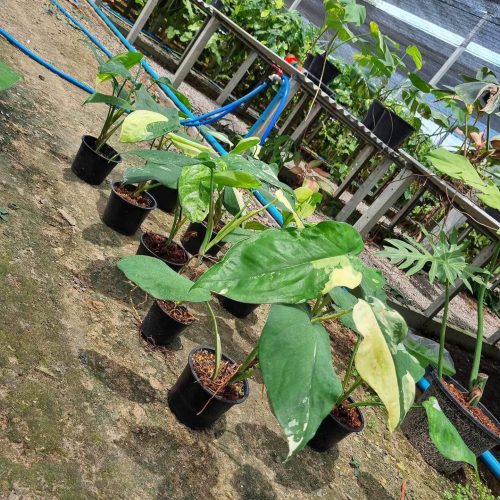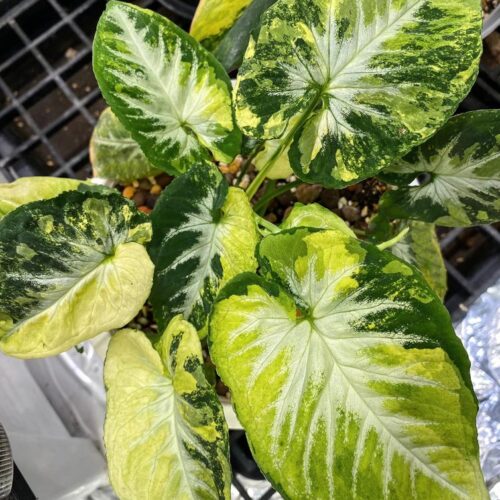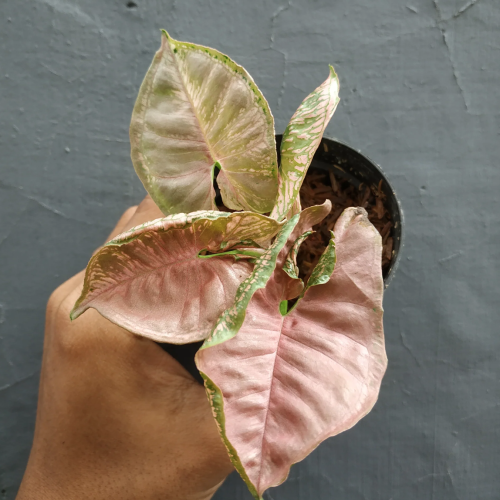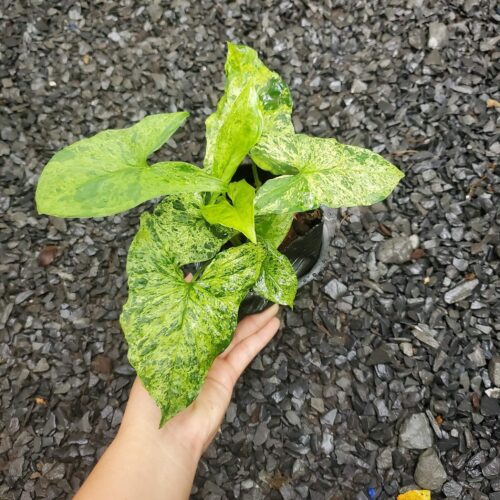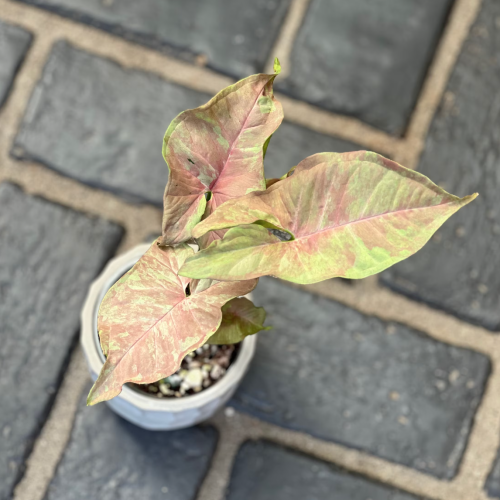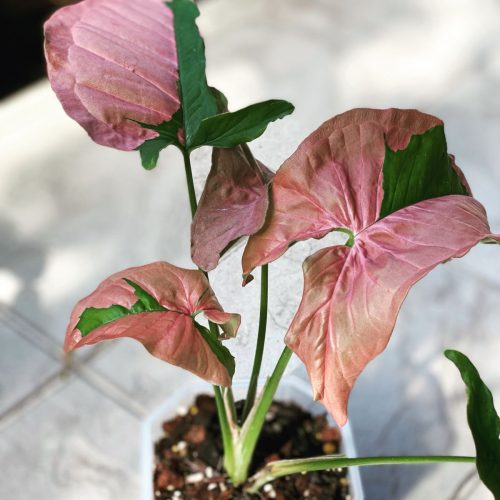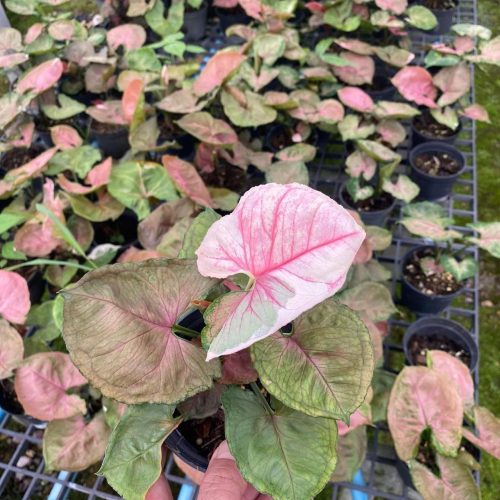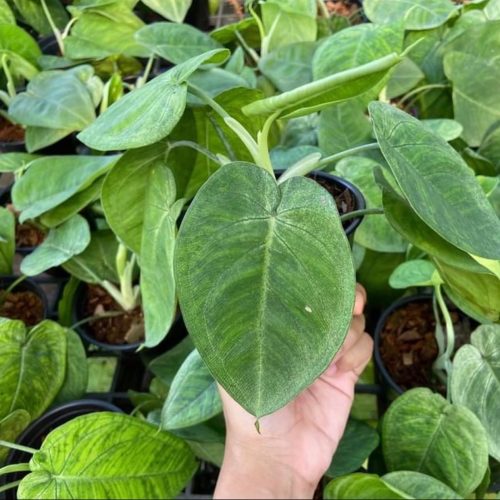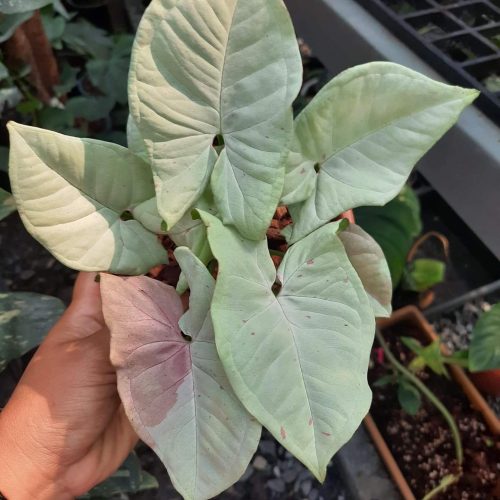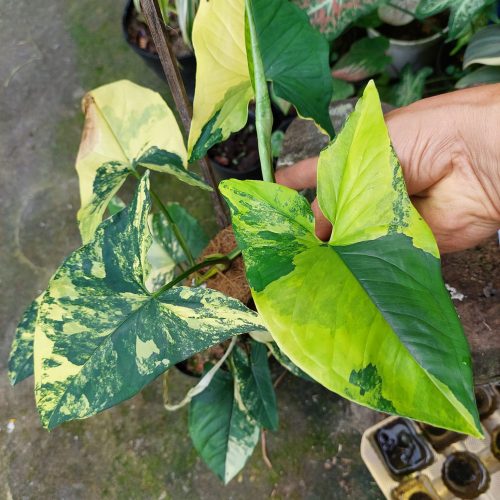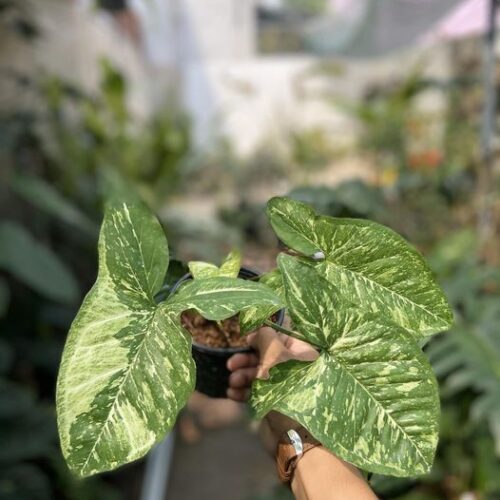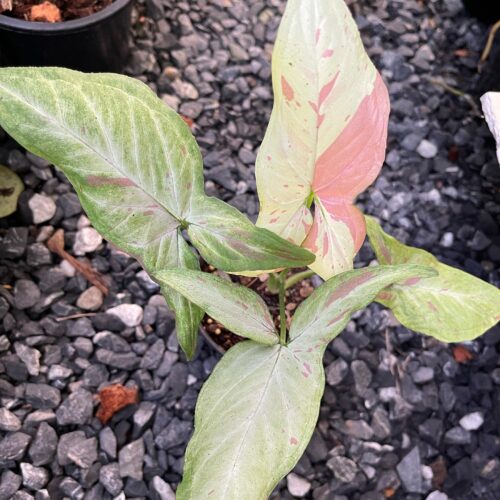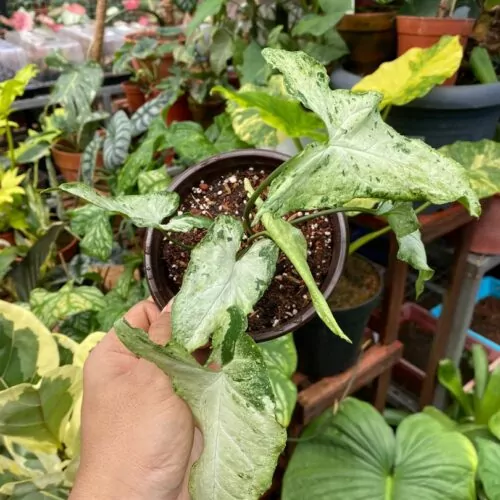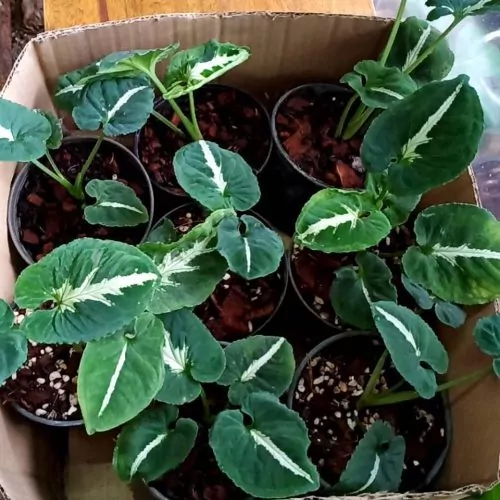The Syngonium Albo Variegated is a striking houseplant known for its arrowhead-shaped green and white variegated leaves. This easy-to-grow vine makes a wonderful addition to any indoor plant collection.
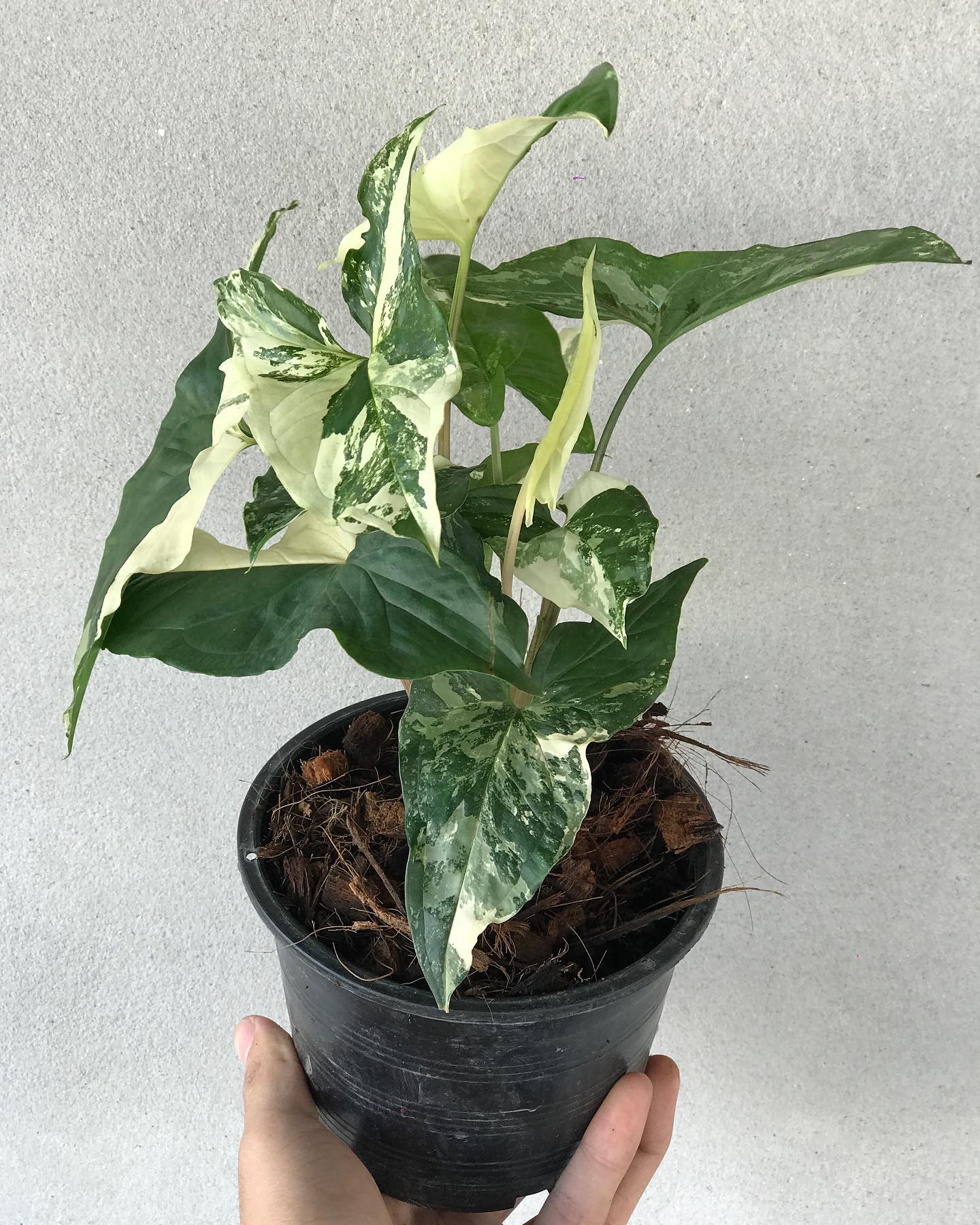
Overview and Origin
The Syngonium Albo Variegated is a cultivar of the species Syngonium podophyllum. It’s native to tropical rainforests in Central and South America.
Natural Habitat
In the wild, the Syngonium Albo Variegated is an epiphytic vine that grows on trees and rocks. It thrives in warm, humid environments with filtered sunlight streaming through the forest canopy.
Discovery and Cultivation
This variegated variety was first commercially produced in the 1990s. Its white-streaked foliage became an instant hit among houseplant enthusiasts. Through tissue culture propagation, Syngonium Albo Variegated plants have made their way into nurseries and homes worldwide.
Physical Characteristics
The Syngonium Albo Variegated has arrow-shaped leaves up to 8 inches long that emerge light green and quickly develop white markings as they mature.
Foliage
No two leaves look exactly alike on these vines. They display an artistic mix of greens and creamy whites with pink tones on new growth. The white areas tend to become more extensive as leaves age.
Stems and Growth Habit
Stems have a tendency to wander and climb as the plant matures. Without support, trailing stems can reach 3-6 feet long. With a trellis or post, vines may climb up to 10 feet high.
Flowers and Fruit
Although grown mainly for its foliage, the Syngonium Albo does occasionally produce small green flower spathes. However, indoor plants rarely bloom. They also do not set seed.
Growing Conditions
Caring for these easy-going plants mainly involves getting their basic needs met. With the right care, Syngonium Albo Variegated will stay healthy and lush for many years.
Light
These plants need bright, indirect light to bring out the best variegation. A north or east-facing window works well. Rotate plants occasionally so all sides get equal sunlight. Direct southern exposure may scorch leaves.
Temperature and Humidity
Warm indoor temperatures between 60-80°F suit them best. Keep away from cold drafts and heating vents to prevent leaf damage. Average room humidity is fine, though they appreciate a periodic misting.
Soil and Watering
Use a well-draining potting mix and select a container with drainage holes. Allow the top inch of soil to dry between thorough waterings. Take care not to overwater, as it may cause root rot.
Fertilizer
Feed monthly during the growing season with a balanced liquid houseplant fertilizer diluted to half strength. This will encourage healthy foliage growth.
“To ensure your Syngonium Albo Variegated thrives, follow our comprehensive Syngonium Care guide for all the necessary care tips.”
Where to Syngonium Albo Variegated? Benefits from importing plants from Thailand
- Shipping: Door to door shipping, fast and safe with Dragon Courier
- Biodiversity: Thailand is known for its rich biodiversity, including a wide variety of aroid species. This diversity allows importers to access a broad range of unique and exotic aroid plants.
- Quality and Health of Plants: The suitable climate helps the plants grown here stay healthy and of high quality.
- Cost-Effectiveness: Due to favorable growing conditions and efficient production methods, Thai aroid plants can often be more cost-effective compared to those from other countries.
- Access to Hybrid Varieties: Thai growers are often involved in the development of new hybrid aroid varieties, offering unique plants that may not be available from other sources.
Syngonium species are the most sought after by aroid plant lovers
Propagation
The Syngonium Albo Variegated propagates easily from stem cuttings rooted in water, moist potting mix, or soilless media like perlite, vermiculite, or sphagnum moss.
Stem Cuttings
Take 4-6 inch tip cuttings in spring or summer. Remove lower leaves and place the bare end in water or rooting medium. New roots usually emerge in 2-3 weeks. Transplant into potting mix once rooted.
Division
Mature plants may be divided in early spring. Carefully separate rooted stems at the base, ensuring each division has plenty of healthy roots. Repot divisions and water well.
“Discover various methods to propagate your Syngonium Albo Variegated in our detailed guide on Syngonium Propagation: Easy Steps to Multiply Your Syngonium.”
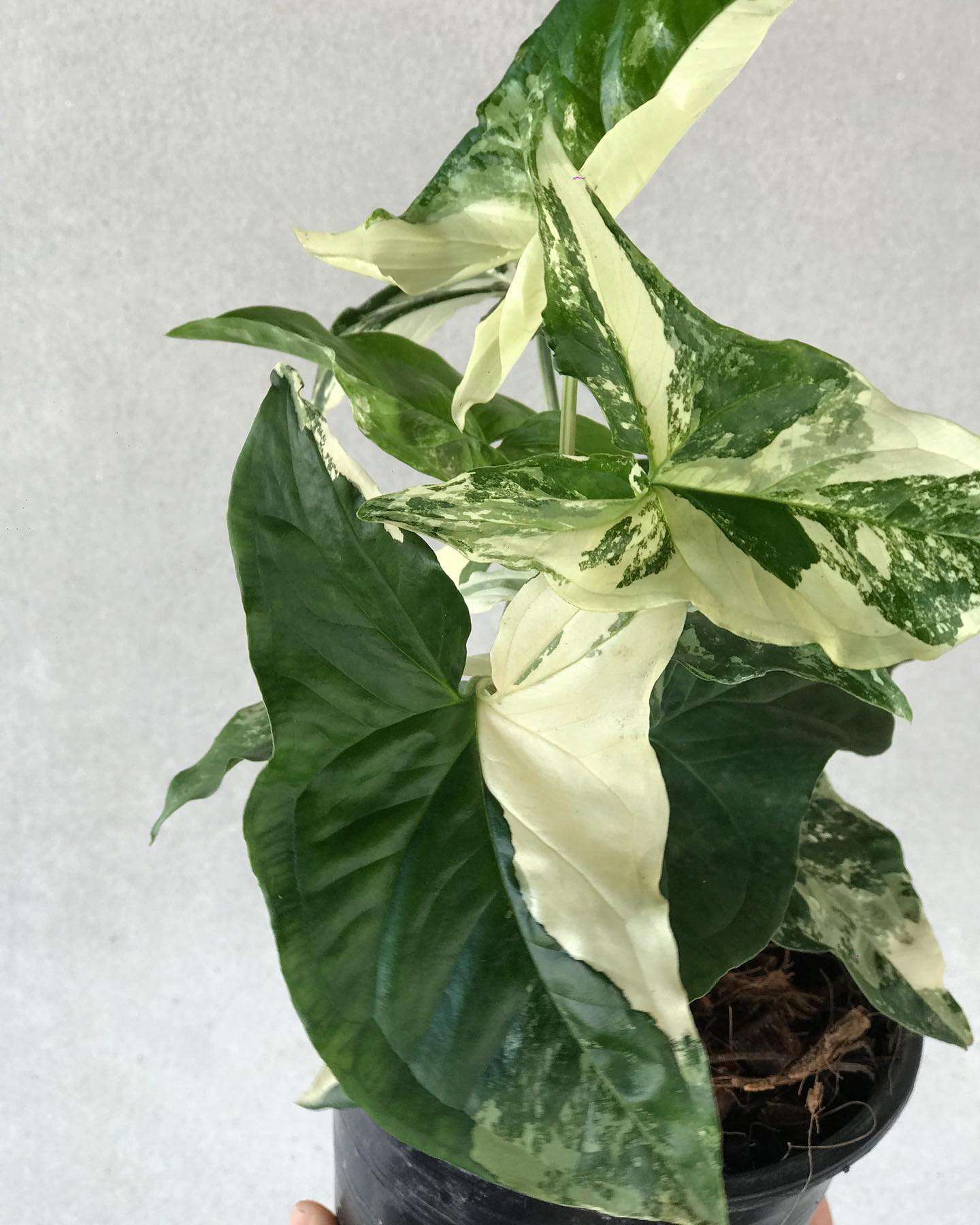
“Discover the beauty of nature in your home with the Syngonium Albo Variegated. Click now to bring this stunning, easy-to-care-for plant into your life!”
Common Concerns
When grown in the preferred conditions, Syngonium Albo Variegated remains pest and disease free. Potential issues to watch for include:
Pests
Spider mites, aphids, and mealybugs may occasionally infest plants. Isolate and treat infested plants promptly. Insecticidal soap or neem oil sprays often remedy mild cases.
Root Rot
Overwatering can lead to fungal root rot. Allow soil to partially dry out between waterings and always drain planting containers properly. Discard damaged plants to prevent spread.
Leaf Spotting
Bacterial or fungal leaf spot may occur in overly moist conditions with poor air circulation. Improve airflow and water plants from below foliage to prevent issues.
“Learn more about the common challenges and how to deal with them in our Syngonium Overview.”
Displaying Syngonium Albo Variegated
This trailing vine lends drama and visual interest to shelves, tabletops, and hanging planters. Allow the stems to trail or train them onto supports. Grouping with other foliage plants makes an attractive display. Bright, indirect light brings out the most striking variegation. Turn plants periodically so all sides develop the unique patterning. Mist vines daily or place pots on pebble trays to boost ambient humidity.
Conclusion
With its gracefully arching stems and bold white-streaked leaves, it’s easy to see why the Syngonium Albo Variegated has become a popular houseplant choice. This easy-care vine thrives with basic care indoors, lighting up spaces with its artistic foliage. Give it a try in your home or office – it just may become your new favorite houseplant!
FAQs
- How often should I water my Syngonium Albo Variegated?
- Water when the top inch of the soil feels dry.
- Can the Syngonium Albo Variegated grow in low light?
- It prefers bright, indirect light but can tolerate lower light conditions.
- Why are the leaves on my Syngonium Albo Variegated turning yellow?
- Yellow leaves could indicate overwatering or lack of nutrients.
- How can I increase the variegation on my Syngonium Albo Variegated?
- Variegation can be enhanced by providing the plant with ample indirect light.
- Is the Syngonium Albo Variegated toxic to pets?
- Yes, it can be toxic if ingested. Keep it out of reach from pets and small children.

